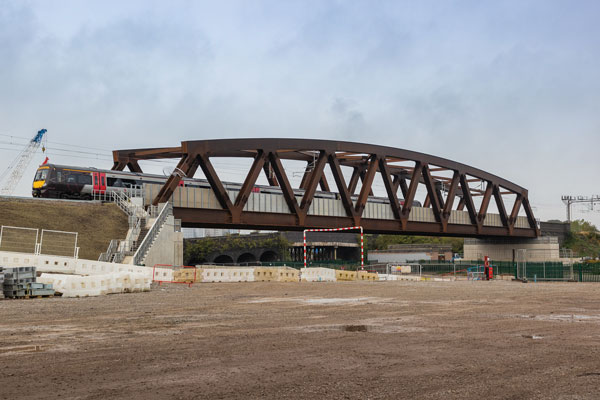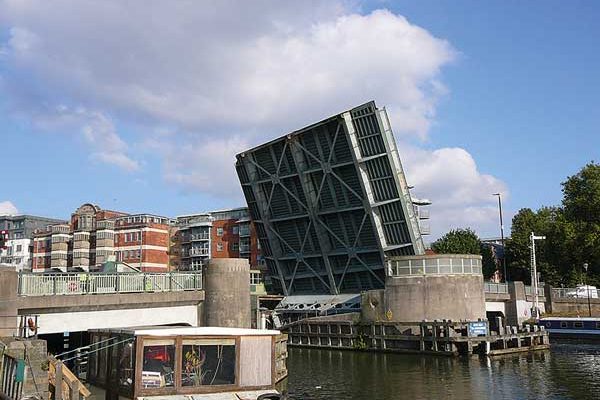SSDA Awards
COMMENDATION: SAS13 Bridge Replacement, Birmingham
Forming an important part of the HS2 line approach to Birmingham, a weathering steel Warren truss structure is the longest railway bridge in the Midlands.
FACT FILE
Structural engineer: Tony Gee & Partners LLP
Steelwork contractor: Severfield
Main contractor: Skanska UK
Client: Network Rail
Located close to Birmingham city centre on the Stechford to Aston (SAS) line, the SAS13 bridge is a single-span weathering steel Warren truss structure spanning 92m.
Designed to minimise disruption to the railway network, the construction of the bridge only required three weekend closures of the lines over which it spans, while the SAS lines were closed for a period of just three weeks.
The old viaduct, which the bridge replaces, was demolished in two stages. In the first stage, the steel deck was lifted out by crane and removed. Following this, the masonry arches were mechanically demolished by large excavators operating at ground level.
The whole scheme was designed to make the structure buildable within a short rail blockade, with limited time available to install the bridge. This led to the decision to build offline and use Self-Propelled Modular Transporters (SPMTs) to lift and transport the bridge into its final position.
The new replacement bridge comprises 1,095t of weathering steel, chosen because it will require less maintenance in the future compared to other grades of steel, and 26,715 bolts, which weigh a further 25t.
Once the steel bridge structure was assembled offline, it was jacked up to a height of 5m from a build height of 1.5m. The fibre-reinforced concrete deck slab, upstands and walkways were then cast, comprising 3,601m³ of concrete, which added a further 1,600t to the overall weight of the bridge.
Once the deck the completed, 18 SPMTs were used to lift and transport the bridge into its final position. Each SPMT had 12 axles, which meant a total of 216 axles and 432 wheels were used to move the bridge from its fabrication compound to its final position.
Within 1.5 hours of starting the move in the fabrication yard, the bridge was placed in its final position with 75% of the load on the bearings. The entire installation period took just under three hours to complete.
At the same time as the bridge was being fabricated and assembled offline, the new bridge abutments and foundations were being constructed. On the west side, the site constraints meant that large diameter piling was not possible. The foundations were instead designed as 4.5m diameter ‘monopiles’ constructed as caisson shafts either side of the viaduct.
Meanwhile, access to the east abutment was less constrained and so large diameter bored piles were chosen as the most economical foundation solution.
Overall, offsite fabrication and assembly of the bridge adjacent to its final position cut the number of lorry movements along local roads, while minimising both carbon emissions and the impact to the local community.
In summary, the judges say with careful planning, taking full advantage of lessons learned on earlier projects, the bridge was installed fully assembled with minimal line closures. Constructed in weathering steel it provides a handsome addition to the local environment.















